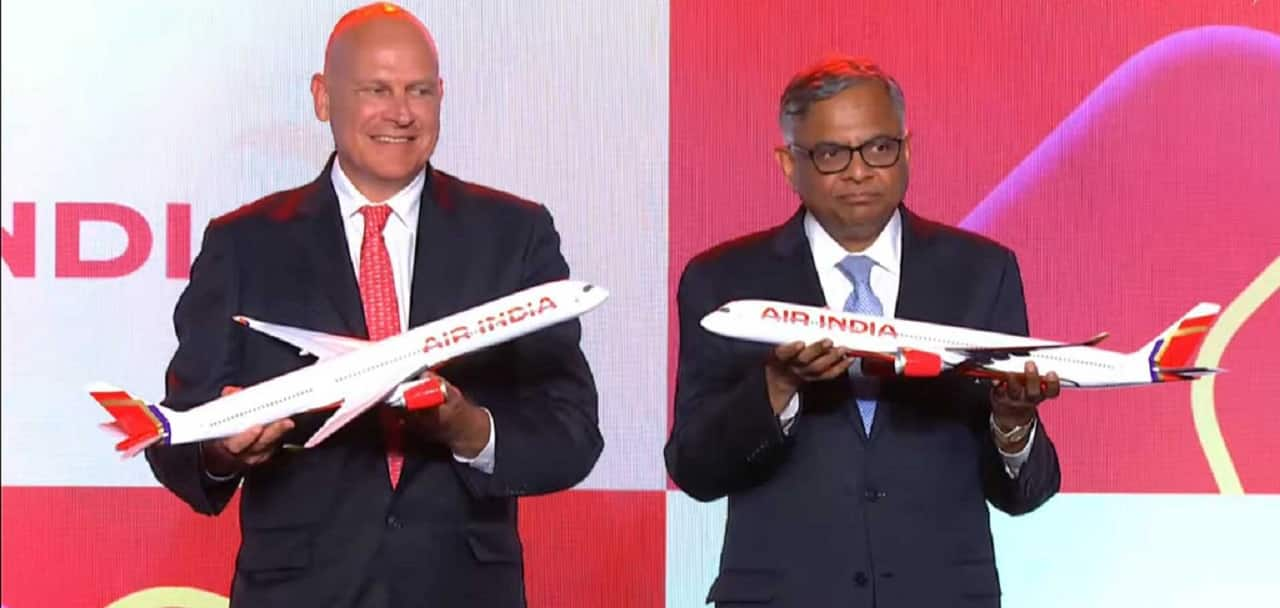 |
|
Air India's recent aggressive expansion into the US market, while met with some criticism regarding initial service quality on long-haul flights, has been strategically vital for the airline's growth. CEO Campbell Wilson's statement highlighting a potential five-year delay had the airline waited for new aircraft underscores the significant decision-making process involved. The choice to leverage existing, albeit limited, capacity in its legacy fleet allowed Air India to capitalize on a crucial market opportunity, establishing a direct presence between India and the US much sooner than would have been possible with a wait-and-see approach. This proactive strategy, although resulting in some initial customer service challenges, has demonstrably given Air India a significant head start in a highly competitive market. The immediate access to the lucrative US market likely outweighs the temporary negative impact on customer satisfaction caused by using older aircraft.
The challenges associated with relying on legacy aircraft were not insignificant. Wilson directly addresses the impact of the age and condition of Air India's Boeing 777-200s on on-time performance. Further complicating matters were airspace restrictions stemming from global conflicts, creating unforeseen operational difficulties. These factors combined to negatively affect Air India's ability to provide consistently reliable and high-quality service during its initial US expansion. This points to a trade-off inherent in prioritizing speed of market entry over immediate optimal service delivery. The airline recognized this and consequently initiated a significant retrofitting program to address these concerns, investing over $400 million to upgrade its existing wide-body aircraft with new seats and parts.
The long-term strategy hinges heavily on the timely delivery of new aircraft and the successful implementation of the aircraft retrofit program. Delays in both areas have created further challenges for Air India. Supply chain issues have impacted the retrofitting schedule, pushing the start date to 2025. Similarly, delays in the delivery of new wide-body aircraft from Boeing, exacerbated by a strike at the manufacturer's Seattle factory, have further constrained the airline's expansion plans. The planned retrofitting of 3-4 aircraft per month, once commenced, represents a substantial undertaking, but the success of this initiative is crucial in addressing the existing service quality concerns. The expected delivery of 100 new aircraft between 2026 and 2027 signals a significant fleet modernization effort, offering Air India the opportunity to offer a premium service experience consistent with its ambitions.
The strategic decision to prioritize expansion over immediate premium service is a calculated risk. While Air India acknowledges the negative impact on customer experience stemming from the use of its legacy fleet, the opportunity cost of delaying entry into the US market was deemed significantly higher. The success of this strategy relies on the successful implementation of the retrofitting program and the timely delivery of new aircraft. Any further delays could significantly impact the airline's competitiveness in the US market. It's a gamble that requires careful monitoring and agile response to unforeseen challenges. The company’s financial performance in the last fiscal year, showing significant revenue growth, suggests that the early expansion strategy is paying off. However, sustained success requires delivering on the promised service improvements stemming from the fleet modernization initiatives. The airline's current market share demonstrates a strong position domestically, which is expected to further bolster the airline's growth trajectory in the coming years.
Beyond the immediate challenges related to fleet modernization, Air India's expansion strategy must consider broader market dynamics. The relative stability of domestic airfares in India, despite inflation and rising fuel prices, presents a contrasting picture to the challenges of international expansion. While domestic operations are a key driver of growth, the airline anticipates greater growth from short-haul international flights in 2025 as more narrow-body planes are added to the fleet. The slight softening of passenger yields, as the post-pandemic travel market normalizes, presents a challenge that will require a well-calibrated approach to pricing and ancillary revenue generation to ensure profitability. The airline's strong financial performance, evidenced by the increase in consolidated annual operating revenues, is a positive sign and suggests that the current strategy, despite the short-term challenges, is yielding positive results. However, maintaining this momentum requires continued focus on delivering the promised service improvements through fleet upgrades and navigating the complexities of both domestic and international markets.
